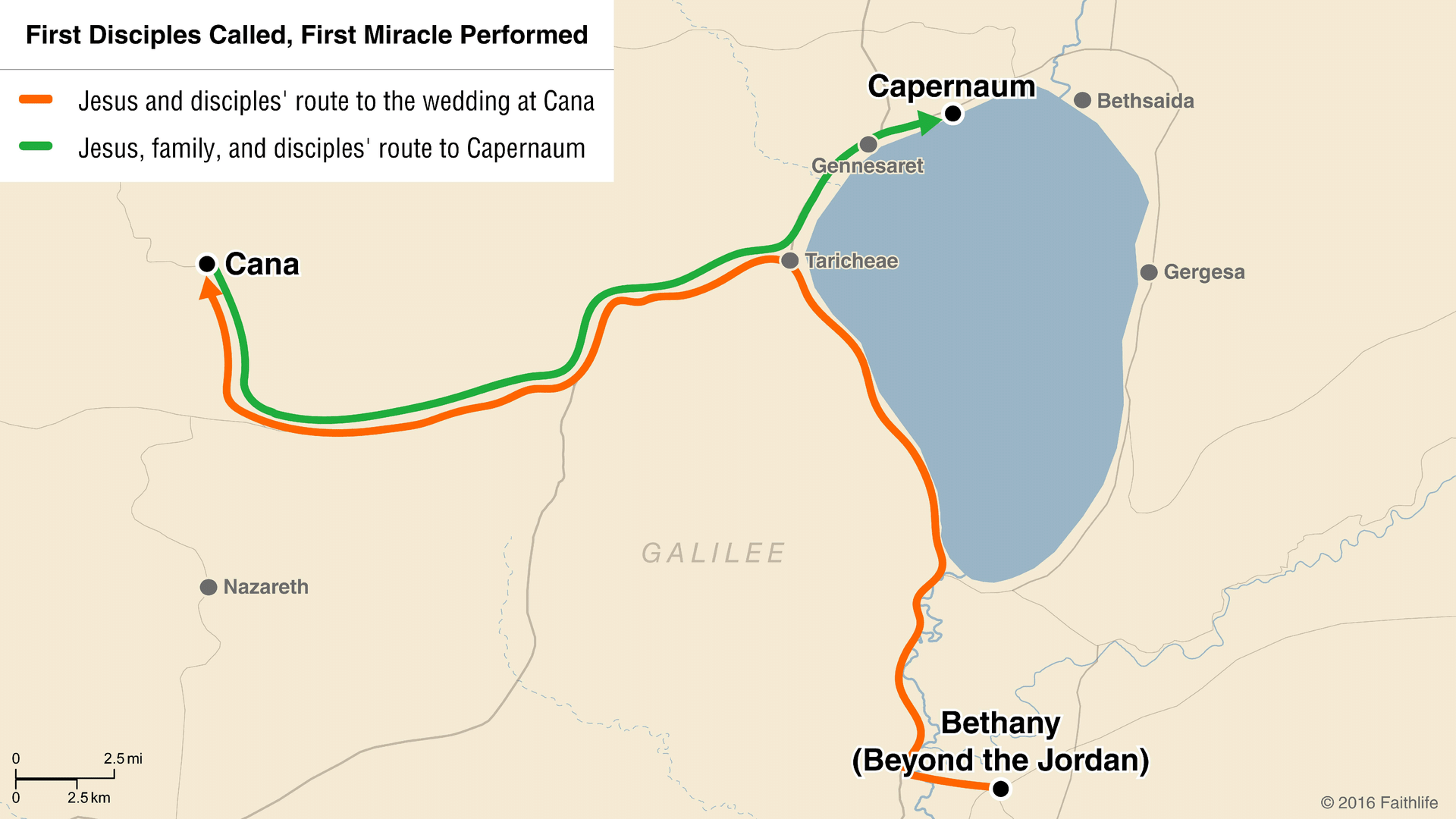Cana: Historical & Cultural Background
1. Geography
A small village in Galilee, about 8–9 miles north of Nazareth and near Sepphoris (a larger Hellenistic city).
Not on major trade routes, but within reach of Galilean towns like Capernaum and Bethsaida.
Modern scholars identify Cana either with Khirbet Qana or Kafr Kanna, both in lower Galilee.
2. Size & Population
Tiny rural settlement: likely only a few hundred residents.
Houses were modest, with simple courtyards, cisterns, and storage jars—perfect context for John’s story of stone water jars at the wedding (John 2:6).
3. Social Reputation
Unlike Nazareth or Capernaum, Cana wasn’t widely known.
Its obscurity makes it fitting for Jesus’ first public miracle to occur there—showing God’s glory in the ordinary.
4. Daily Life
Agricultural village: residents grew olives, grapes, and grain.
Weddings were the biggest community event in villages like Cana, often lasting 7 days, with the whole town participating.
Running out of wine at such a feast would bring deep shame to the family—so Jesus’ miracle was not only a sign of His glory but a rescue of a household’s honor.
5. Religious Climate
Cana was a Jewish village, faithful to synagogue and Torah.
John 4:46–54 records another miracle in Cana—the healing of a royal official’s son—showing that even those of higher rank sought help in this humble village.
6. Symbolic Meaning
Water to Wine (John 2:1–11): Jesus transforms purification jars (symbols of Jewish ritual) into overflowing wine—a sign that He brings the new covenant of joy and abundance.
Healing of the Official’s Son (John 4:46–54): Shows Jesus’ authority extends beyond Cana, even into noble households.
7. Theological Weight
Cana’s obscurity magnifies the miracle: God chose a small, rural wedding to reveal the Messiah’s glory.
The first miracle happening at a wedding underscores marriage, joy, and abundance as themes of the kingdom.
Cana serves as a bridge: a village with no fame becomes a stage for Jesus’ first signs, drawing disciples to deeper belief.

